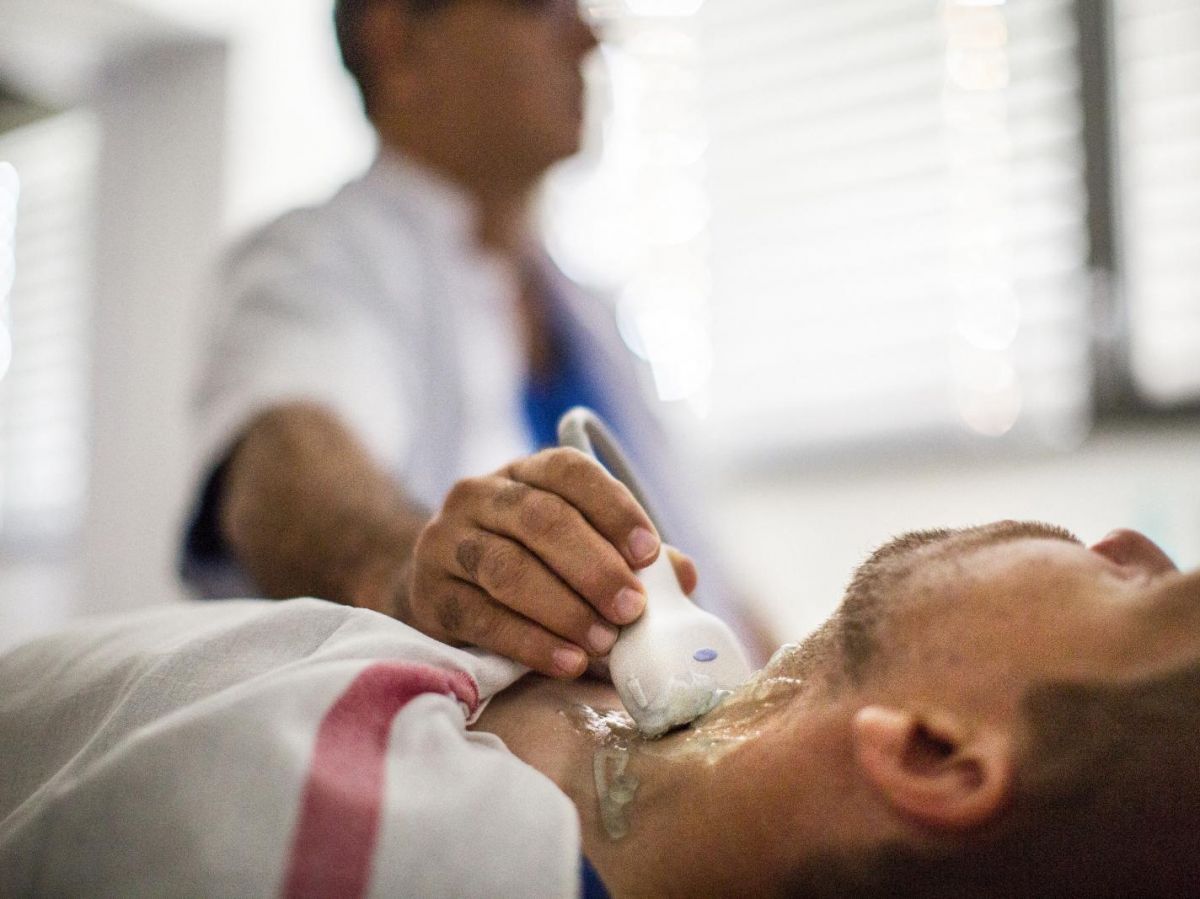It's a disabling condition, still poorly understood and insufficiently recognized. Its name? Hypoparathyroidism (HPT, see box). It affects at least 100,000 people in Europe, and tens of thousands in France. In fact, the exact number of patients is not well known, as the condition is largely underestimated, even though it occurs in 75% of cases after thyroid removal. For some patients, the diagnostic delay can even exceed ten years. Yes, ten years, without a diagnosis being made and treatment being prescribed.
As a reminder, PTH is normally secreted by four small glands, all the size of a grain of rice, located close to the thyroid and during an operation for a goiter or cancer, there is a risk that the glands will be damaged.
Consequently, the lack of PTH occurs quickly in the hours or days following the intervention, with calcium levels resulting in various signs, both physical (fatigue, cramps, pain, tingling) and cognitive or emotional (see box).
So many atypical symptoms, varying in intensity from one patient to another, which develop chronically over time and which can fluctuate greatly from one day to the next, or even from one hour to the next.
The track opened by Epi-Hypo
Mentioned during exchanges organized during the 40thE congress of the French Society of Endocrinology (SFE) which just took place in Clermont-Ferrand, HPT remains poorly identified to this day, its clinical signs are often trivialized, biological anomalies are not always present, this discordance explaining the diagnostic delay.
But HPT is a disease with "a unique cohort in the world, the largest in number of patients“, explains Dr Jean-Philippe Bertocchio, nephrologist, Hopital Pitie Salpetriere (Paris).
Read alsoWhy is the pineal gland called the third eye?
His Name Epi-Hypo. It all started almost 10 years ago when, with a nephrologist colleague, Professor Pascal Houillier (Georges Pompidou European Hospital, Paris), they both realized that they very often saw wandering HPT patients in consultation coming for a 2E, 3E, or even 4E medical advice. The idea then came to collect these cases to create what became the first French cohort of HPT patients., specifies the specialist. Today, thanks to the participation of more than 200 doctors from 50 private and public centers spread across the country, 1,300 patients are enrolled in the largest cohort of hypoparathyroid patients in the world, the best phenotyped and the largest in number of patients.“.
Epi-Hypo has thus made it possible to provide information on this diagnostic wandering time, approximately one year for 40% patients but which can reach and exceed 10 years for more than 20% of them.
This cohort also provides further insight into the causes of the disease. 73% of the cases are linked to thyroid surgery, 14% have a genetic origin, an autoimmune disease or following irradiation, and 13% remain of unknown origin.
But Epi-Hypo also shows that in one in two cases, despite a serum calcium level considered normal, the patients are still symptomatic, their quality of life being profoundly affected.
Finally, Epi-Hypo also provides information on the results of conventional treatments, calcium and vitamin D supplementation. In 2017, about 5% patients were tested, today there are almost 30%., explains the nephrologist.
Improve support
Today, it is most often admitted, but without great precision, that after a total thyroidectomy, " 90% patients will not present HPT, 10 % will have transient HPT and will be persistent for 2 to 9 % of them, explains Dr. Cecile Ghander, endocrinologist ( Pitie Salpetriere hospital, Paris). Among these, the number of people with severe HPT that is refractory to simple drug treatments is simply unknown. Why? Perhaps because we fail to ask the right questions by not specifically investigating our patients' quality of life.
There is no doubt that in the future, care should improve because new molecules are expected to compensate for the lack of PTH (palopegteriparatide, eneboparatide, encaleret, etc.), all reserved for those who have severe HPT that is refractory to conventional treatments.
To the great satisfaction of the patients brought together by the association Hypoparathyroidism France, keen to convey the following message: no longer to be considered solely from the angle of their calcium levels, which may be normal under treatment, but that their complaints are finally heard.
And if it is not possible for a patient to register directly on Epi-Hypo, it is always possible to discuss it with their doctor, general practitioner or endocrinologist, to access it through them and to register personally with Epi-Hypo's little sister: ComPaRe hypoparathyroidism by clicking here.
What is hypoparathyroidism?
It is an endocrine disease linked to a deficiency in parathyroid hormone, PTH, involved in calcium regulation.
Its absence results in a drop in blood calcium levels, the symptoms of which vary and can be physical (fatigue, cramps, tingling, spasms) but also cognitive (confusion, difficulty concentrating, sleep disorders) or emotional (anxiety, depression, irritability, etc.).
Conventional treatment is based on oral calcium and vitamin D supplementation.
Other so-called second-line molecules administered by daily subcutaneous injection (palopegteriparatide, eneboparatide, encaleret) are coming onto the market. Intended for severe forms of the disease, those refractory to oral treatments, they are currently only available in hospitals and their prescription is currently reserved for endocrinologists, nephrologists, and rheumatologists.


